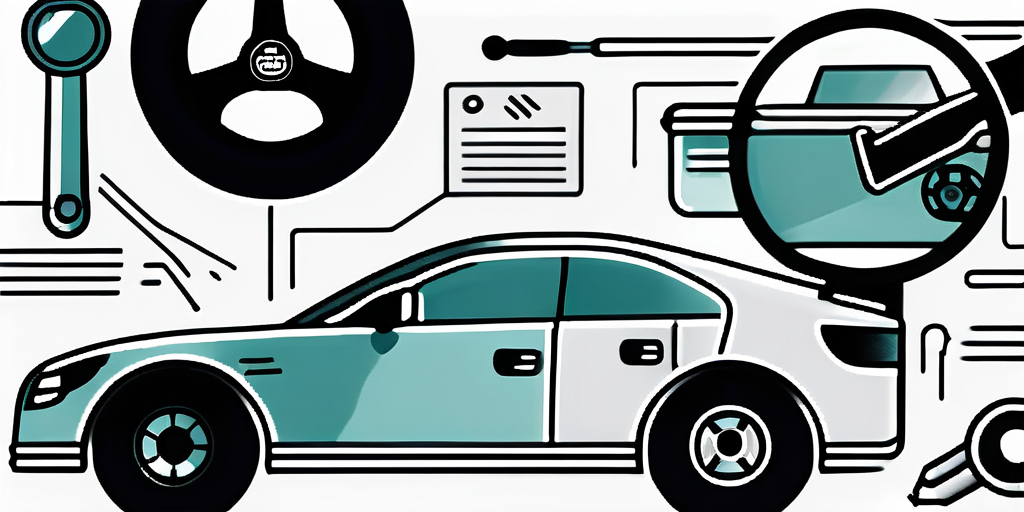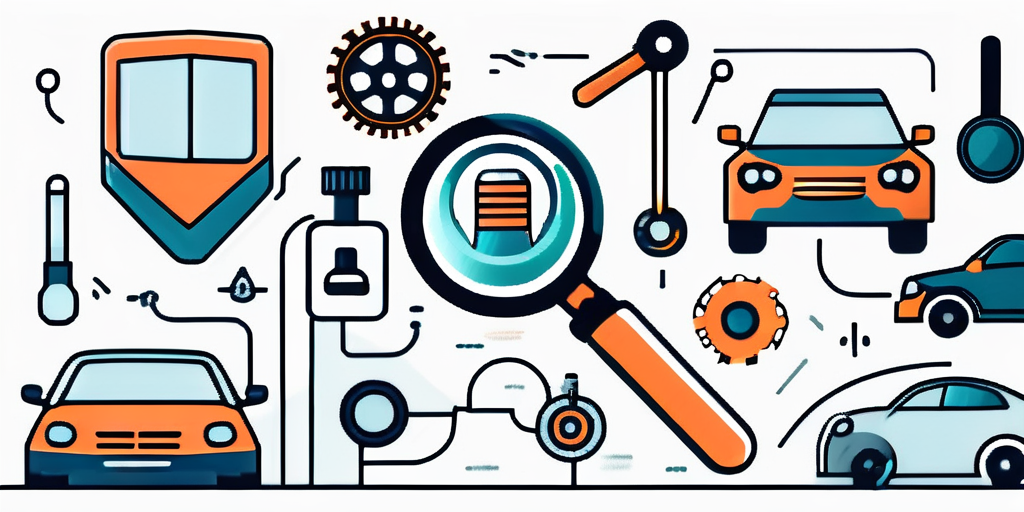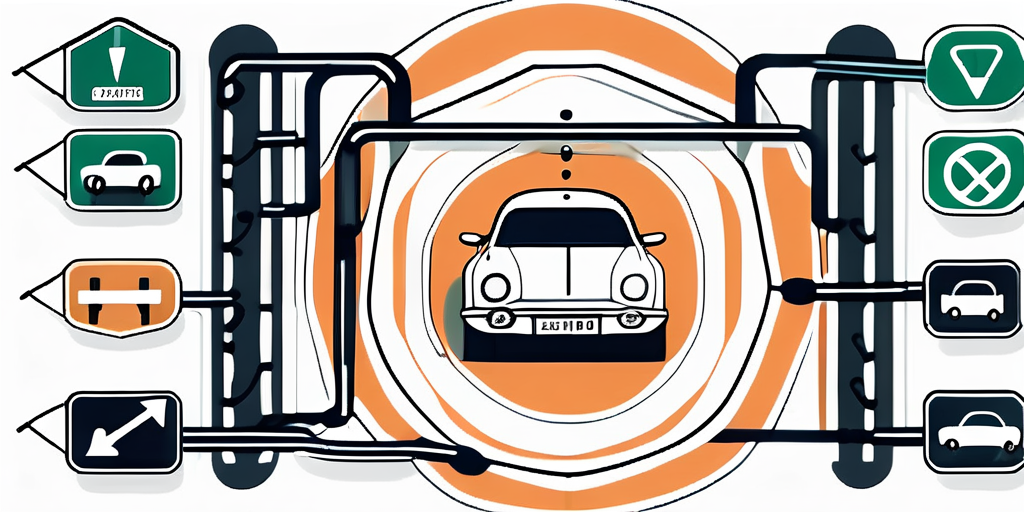The Ultimate Guide to Used Car Lead Generation
In the highly competitive used car industry, lead generation plays a crucial role in driving sales and business growth. With the right strategies and tools, dealerships can attract potential customers, nurture relationships, and convert leads into loyal customers. This comprehensive guide will provide you with valuable insights and techniques to help you master the art of used car lead generation.
Understanding the Basics of Lead Generation
Before diving into the world of lead generation, it’s important to understand what it means and why it is essential for your used car dealership’s success.

Defining Lead Generation in the Used Car Industry
Lead generation refers to the process of identifying and capturing potential customers who have shown interest in your products or services. In the context of used car sales, lead generation involves attracting individuals who are actively searching for a pre-owned vehicle or are open to the idea of purchasing one.
When it comes to lead generation in the used car industry, it’s not just about casting a wide net and hoping for the best. It’s about strategically targeting the right audience and engaging with them in a meaningful way. This means understanding their needs, preferences, and pain points, and tailoring your marketing efforts accordingly.
By generating qualified leads, your dealership can establish a steady stream of prospects and increase your chances of converting them into paying customers. But how do you go about doing this effectively?
The Importance of Lead Generation for Used Car Sales
Lead generation is crucial for used car sales for several reasons. Firstly, it allows you to target individuals who are already interested in buying a used car, increasing the likelihood of making a sale. Instead of wasting resources on reaching out to people who may not be interested, you can focus your efforts on those who are actively seeking a pre-owned vehicle.
Secondly, a strong lead generation strategy helps build brand awareness and establishes your dealership as a trusted authority in the industry. When potential customers see your dealership consistently providing valuable information and resources, they are more likely to trust you and consider you as a reliable source for their used car needs.
Lastly, lead generation enables you to optimize your marketing efforts and allocate resources effectively. By tracking and analyzing the data from your lead generation campaigns, you can gain valuable insights into what works and what doesn’t. This allows you to refine your strategies, improve your targeting, and ultimately maximize your return on investment.
Now that we’ve covered the basics and highlighted the importance of lead generation in the used car industry, let’s dive into effective strategies for generating leads that will help drive your dealership’s success.

Strategies for Effective Lead Generation
When it comes to generating leads for your used car dealership, there are numerous tactics and techniques you can employ. To ensure optimal results, it’s recommended to utilize a balanced mix of online and offline marketing strategies and leverage the power of social media and SEO.
Online Marketing Techniques for Lead Generation
With the increasing reliance on the internet and digital platforms, online marketing has become crucial for attracting and engaging potential used car buyers. Here are some effective techniques to consider:
- Create a user-friendly and visually appealing website that showcases your inventory, offers detailed information, and encourages visitors to submit their contact details for further assistance.
- Implement SEO strategies to optimize your website for search engines, ensuring that it ranks higher in search results and attracts organic traffic.
- Utilize pay-per-click advertising to target specific keywords and demographics, driving qualified traffic to your website.
- Develop engaging content such as blog posts, articles, and videos that provide valuable information to potential buyers and prompt them to take action.
- Offer incentives such as free car inspection or test drives in exchange for contact information.
- Use lead capture forms strategically to collect potential customers’ details and follow up with personalized communications.
Offline Marketing Strategies for Generating Leads
While online marketing is indispensable, offline strategies can also be highly effective in generating leads for your used car dealership. Here are a few strategies to consider:
- Attend local trade shows, community events, and car exhibitions to showcase your inventory and attract potential customers.
- Network with other businesses and professionals in the automotive industry to establish partnerships and referral programs.
- Distribute flyers, brochures, and business cards in your local area to create awareness and generate leads.
- Host test-drive events and open houses to provide potential buyers with an opportunity to experience your vehicles first-hand.
- Utilize traditional advertising channels such as radio, television, and print media to reach a wider audience.
Utilizing Social Media for Lead Generation
Social media platforms offer a wealth of opportunities for used car lead generation. By leveraging the power of social media, you can engage with potential customers and build meaningful relationships. Here’s how:
Effective Social Media Platforms for Used Car Leads
When it comes to social media, not all platforms are created equal. To maximize your lead generation efforts, focus on the platforms that are popular among your target audience. Facebook and Instagram, for instance, provide excellent opportunities for showcasing your inventory, running targeted advertisements, and engaging with potential buyers. LinkedIn can be a valuable platform for B2B lead generation, especially if you cater to corporate clients. YouTube is another powerful tool for generating leads through informative and visually appealing videos.
Tips for Social Media Engagement and Lead Generation
To maximize your social media lead generation efforts, it’s important to adopt the following best practices:
- Create a consistent brand presence across your social media profiles, ensuring that your messaging, visuals, and tone align with your dealership’s values.
- Regularly post engaging and relevant content that resonates with your audience, such as vehicle reviews, maintenance tips, and industry news.
- Consistently respond to comments, messages, and inquiries in a timely and professional manner, showcasing excellent customer service.
- Run targeted advertisements and promotions to attract potential customers and encourage them to take action.
- Utilize social media analytics to track the performance of your lead generation campaigns and optimize your strategies accordingly.
SEO and Website Optimization for Lead Generation
In the digital era, having a strong online presence is paramount for lead generation. Search engine optimization (SEO) and website optimization techniques can significantly enhance your visibility and attract qualified leads. Here’s what you need to know:
Importance of SEO in Lead Generation
SEO is the process of optimizing your website to rank higher in search engine results pages (SERPs) and increase organic traffic. By implementing effective SEO strategies, you can ensure that potential customers find your dealership when they search for used cars in your area. Higher rankings lead to increased visibility, credibility, and ultimately, more leads.
Website Optimization Techniques for Better Leads
Optimizing your website not only improves your search engine rankings but also provides an enhanced user experience, converting more visitors into leads. Here are some optimization techniques to consider:
- Ensure your website loads quickly and is mobile-friendly, as an increasing number of users access the internet through mobile devices.
- Create clear and persuasive call-to-action buttons throughout your website, encouraging visitors to submit their contact information.
- Use compelling and informative meta tags, titles, and descriptions to entice users to click on your website in search results.
- Optimize your website’s navigation, making it easy for visitors to find the information they’re looking for.
- Regularly update and refresh your website’s content to keep it relevant and engaging.
Email Marketing for Used Car Lead Generation
Email marketing remains one of the most effective tools for lead nurturing and conversion. Here are some essential strategies to build an effective email marketing campaign:

Building an Effective Email Marketing Strategy
To maximize the impact of your email marketing efforts, follow these best practices:
- Segment your email list based on demographics, interests, and behaviors for targeted and personalized communication.
- Create visually appealing and mobile-friendly email templates that reflect your dealership’s branding and engage readers.
- Offer valuable incentives such as exclusive discounts, limited-time offers, or educational content to encourage recipients to take action.
- Include clear and compelling calls-to-action that direct recipients to your website or landing pages, making it easy for them to convert into leads.
- Regularly analyze your email campaign performance, tracking metrics such as open rates, click-through rates, and conversion rates, and make data-driven optimizations.
Email Marketing Best Practices for Lead Generation
To achieve optimal results with your email marketing efforts, keep the following best practices in mind:
- Ensure your email content is relevant, concise, and of value to the recipient.
- Avoid spammy and sales-focused language, instead focusing on building relationships and addressing the needs of your audience.
- Implement strong email deliverability practices, ensuring that your messages reach the intended recipients’ inboxes.
- Personalize your emails as much as possible, addressing recipients by name and tailoring the content to their interests and preferences.
- Provide easy options for recipients to unsubscribe or manage their email preferences to comply with privacy regulations and maintain a positive brand image.
Conclusion
In the world of used car sales, effective lead generation is crucial for driving business growth and maintaining a competitive edge. By mastering the strategies outlined in this ultimate guide, you can attract qualified leads, nurture relationships, and convert prospects into loyal customers. Embrace the power of online and offline marketing, leverage social media platforms, optimize your website for search engines, and implement email marketing campaigns to create a well-rounded lead generation system that fuels your dealership’s success.

Now that you’re equipped with the knowledge to turbocharge your used car lead generation, it’s time to put these strategies into overdrive. At Woobound Marketing, we’re dedicated to Growing Together and Bringing your A-Game. Our passion for cars and expertise in the most effective marketing techniques will help bridge the gap in your dealership’s lead generation efforts. If you value hard work and are ready to accelerate your success with a team that’s as invested in your growth as you are, Ready to shift gears? Let’s chat.








































